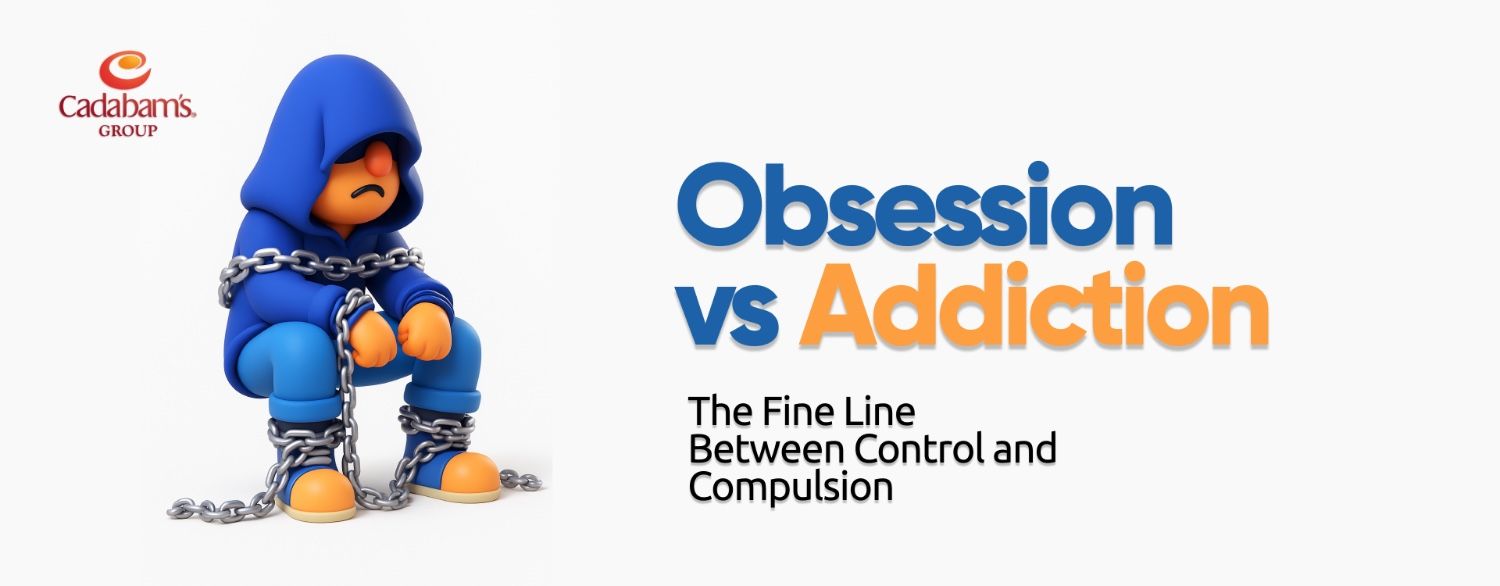Intrusive literally means ‘an unwelcoming thing that makes you feel annoyed or disturbed. And ‘intrusive thoughts’ refer to thoughts or images or visualizations that are typically unwanted, uninvited, and are unpleasant. Intrusive thoughts examples could be thoughts about hurting someone or imagining yourself saying something offensive or embarrassing in a public gathering, or thoughts of behaving in a sexually aggressive way. Now everyone experiences such thoughts once in a while, so how does it turn into OCD (Obsessive Compulsive Disorder)?
A lot of people with OCD ask ‘ Why do I get intrusive thoughts?’. Intrusive thoughts become obsessive when one cannot stop thinking about them no matter how hard they try. Constantly ruminating over these disturbing thoughts can hamper your professional, social, personal, or romantic relationships. The ‘O’ in OCD stands for such intrusive thoughts that keep one obsessing over them till they do something about it.
Compulsions & Obsessive Thoughts
Let’s understand this through an example. We all double-check if we locked the door, double-check the house keys, or if we switched the stove and the geyser off, and double-check the time of departure of the train or flight. We all do that right? But now imagine feeling compelled to triple-check or check four, five, or 10 times. That’s when it might be considered an obsession. Let’s take another situation- say you have intrusive thoughts about hygiene or fear of contamination which compels you to form an extensive ‘cleaning ritual’. To put it briefly- obsession or obsessive thought cause anxiety and the action taken to relieve oneself from that fear/ anxiety is called ‘compulsion’.
Mental rituals are also considered obsessions. These are often done to try and neutralize intrusive or ‘bad thoughts’. For instance, uttering specific words or phrases that they consider as ‘good thoughts’ or words that make them feel less anxious or positive as an attempt to replace the so-called OCD bad thoughts.
How are Intrusive Thoughts Diagnosed?
OCD is a type of anxiety disorder and one can only be declared to have OCD if they meet the specific diagnostic criteria mentioned in the DSM 5 ( Diagnostic and statistical manual for mental disorders)-
- They must have the presence of obsessions, compulsions or both.
- The obsessions or compulsions need to be time-consuming in a way that it is disrupting their routine tasks, relationships or professional life. For example- spending hours folding and unfolding clothes till they are perfectly folded and placed in the closet.
- The obsessions or compulsions are not happening due to any drug effect, substance abuse or other medical condition.
- Lastly, the apparent anxiety cannot be explained through any other mental disorder.
These criteria are checked off through personal sessions by a therapist or mental health professional. On the basis of one’s answers and reactions, the therapist draws an analysis of the patient.
Treatment for Intrusive Thoughts
One needs to understand that there is no magical way of shooing these thoughts away. But there are things one can do to deal with them and let go of the compulsions. What’s most important to understand is that mental disorders like OCD can be treated only through psychotherapy and medication. Among psychotherapy methods like- cognitive behavioral therapy, acceptance and commitment therapy, and exposure and response prevention therapy have proven to be successful as part of Intrusive thoughts therapy.
Intrusive thoughts treatment involves medication. Medication usually includes SSRIs ( selective serotonin reuptake inhibitors) have been seen to be effective drug treatment. (Why is serotonin prescribed? According to newer research, it is being concluded that the abnormalities in serotonin neurotransmission build the premise for anxiety disorders to develop.) All these different therapy techniques along with the right medication help greatly in curbing intrusive thinking and slowly gaining control over one’s thoughts.
Note- Medications tend to cause symptoms and side effects that may need further medicines and psychotherapy.
How to Get Rid of Intrusive Thoughts?
The point when an individual realizes or is made to realize that they are suffering from OCD can be extremely stressful. A lot of time people experience guilt or shame because they can’t control their obsessive behavior. It further gives them a new thought to overthink to a point where they are convinced that something is wrong with them and it cannot be fixed.
- Don’t suppress it:
If you have been diagnosed with OCD then pushing these intrusive thoughts away is never the way. The more you push them away, the harder it hits you back making you feel further anxious and lost. Remember- accepting and addressing your obsession doesn’t mean you are submitting to the compulsion. It rather puts you in control and doesn’t let the anxiety govern the way you behave.
- Don’t feel guilty or ashamed
It is understandable to feel lonely and embarrassed as you might not function as ‘normally’ as others do. However, that doesn’t mean there’s anything wrong with you. Instead of running away feeling guilty, turn it into a conversation starter and seek comfort in the fact that people understand when you open up to them and educate them about your problem.
- Your thoughts don’t define you
Yes OCD can drive you nuts and make you think negatively about yourself. But it’s important to keep reminding oneself that your condition and the intrusive thought do not define you. As you begin dealing with OCD tactfully, it’ll empower you to deal with it without holding yourself accountable for it.
.webp)








